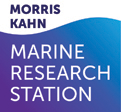Image Gallery
All Rocky reefs Water chemistry Sediment microbiome Apex predators Marine pathology Transect line survey at the rocky reef Transect line survey at the rocky reef Survey marine invertebrate at the rocky reef Survey marine invertebrate at the rocky reef HN55260 HN53749 1 Underwater photography MKN6016 Ray survey Ray survey _MKN9553 _MKN9635 Naharia45S_20220517_093214 Naharia45S_20220517_093241 Naharia45S_20220517_093312 Naharia45S_20220517_093359 Naharia45S_20220517_093520 Naharia45S_20220517_093909 Naharia45S_20220517_094105 Naharia45S_20220517_094131 Naharia45S_20220517_094150 Naharia45S_20220517_094216 Sdot-Yam25S_20220529_082529 Sdot-Yam25S_20220529_082538 Sdot-Yam25S_20220529_084437 Sdot-Yam25S_20220529_085304 Sdot-Yam25S_20220529_085431 Sdot-Yam25S_20220529_085609 _HN54886 _HN54921 _HN54945…

